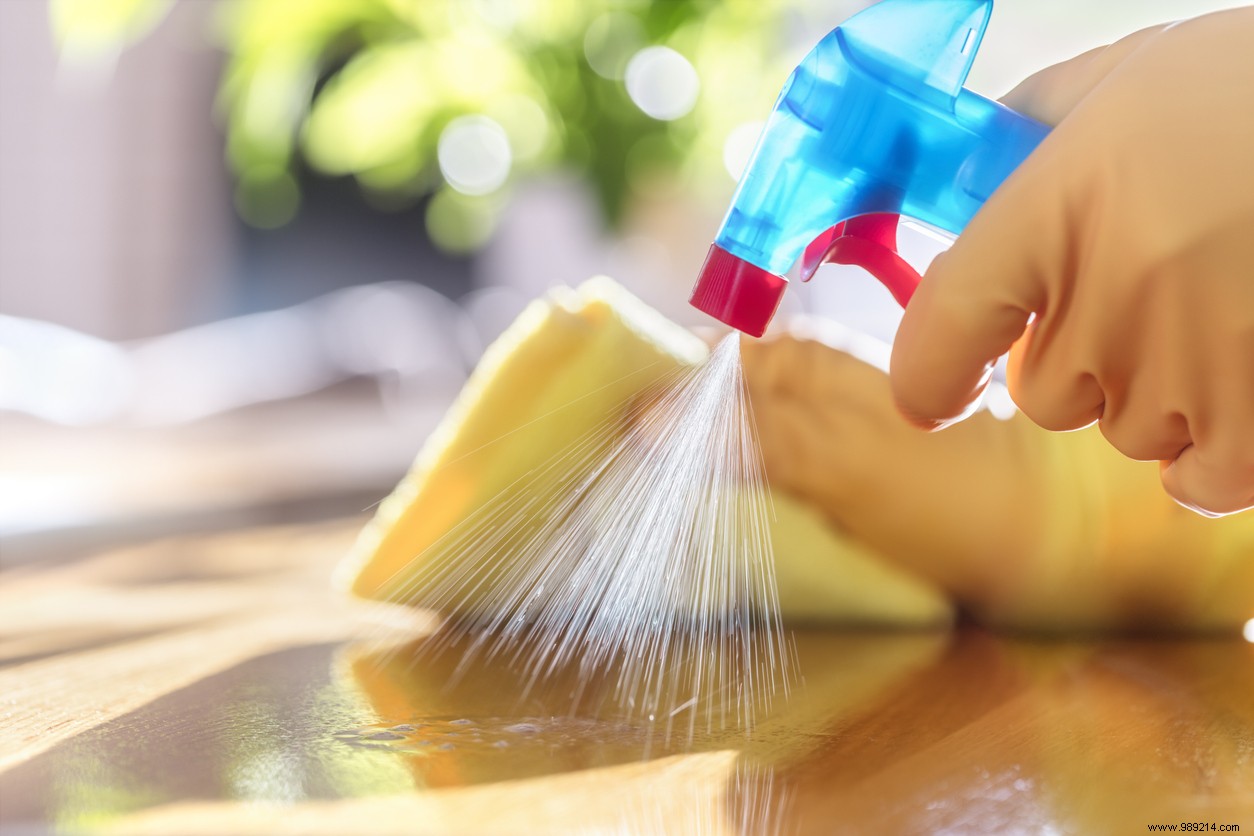Since the Covid-19 pandemic emerged, cleaning products have been particularly and widely promoting their disinfectant properties. And yet, some of them should be avoided. It turns out that combining cleaning and disinfecting substances in the same product is not a guarantee of effectiveness, quite the contrary.
In the cleaning departments of supermarkets, home maintenance products proudly display various promises such as "Kills Germs", "Antibacterial", "Kills Bacteria" or "Kills 99% of Household Germs". In other words, beyond claiming a cleaning power, these products also highlight a disinfectant power. In an article from August 26, 2021, 60 million consumers claims to have tested four multi-use products :"Green house Bi-Active floors and surfaces, floor disinfectant and cleaner"; "Sanytol Eucalyptus Floor and Surface Disinfectant Cleaner"; "Cillit Bang Super Cleansing Bleach" and "Carolin Essential Oils, Antibacterial Eucalyptus &Tea Tree".
For the magazine, the results are not very dashing. If the presence of biocidal substances can actually be attractive, this would unfortunately be linked to reduced cleaning performance. Only one of the four products tested is still quite effective at this level (Carolin). However, the worst concerns the degreasing power of these products, that is to say the power to eliminate fat. The effectiveness of the products in question is well below that of conventional cleaners.

For 60 million consumers, these results are not so surprising. Surfactants (for effective cleaning) and biocides (disinfectants) tend to see their performance decrease when they come together in the same product. These products, which are both cleaners and disinfectants, are characterized either by an absence of certain surfactants , or by a decrease in their concentration. This phenomenon finds its source in the chemical nature of the substances in question.
"Coronavirus SARS-CoV-2, which is an 'enveloped virus', is one of those that is easy to kill", reads the report of 60 million consumers .
Indeed, we have known since March 2020 – via a press release from ANSES – that a product as simple as bleach is enough to overcome viruses – including the coronavirus – present on surfaces. In addition, any liquid household cleaning product must be able to display the NF EN 13 697 (bactericidal or fungicidal) and/or NF EN 14 476 (viricidal) standards. Regarding this last standard, the list of viruses concerned must appear on the product.